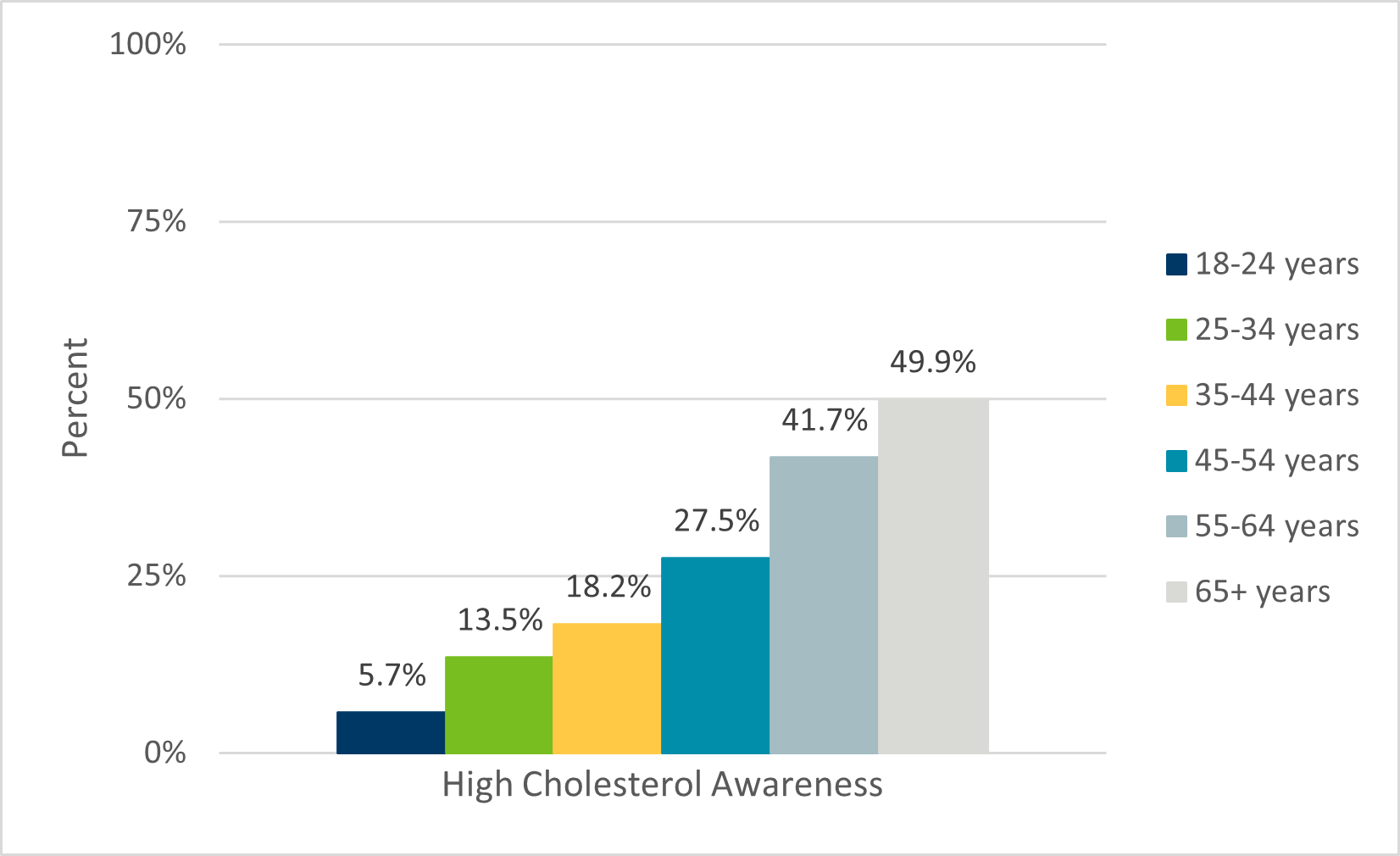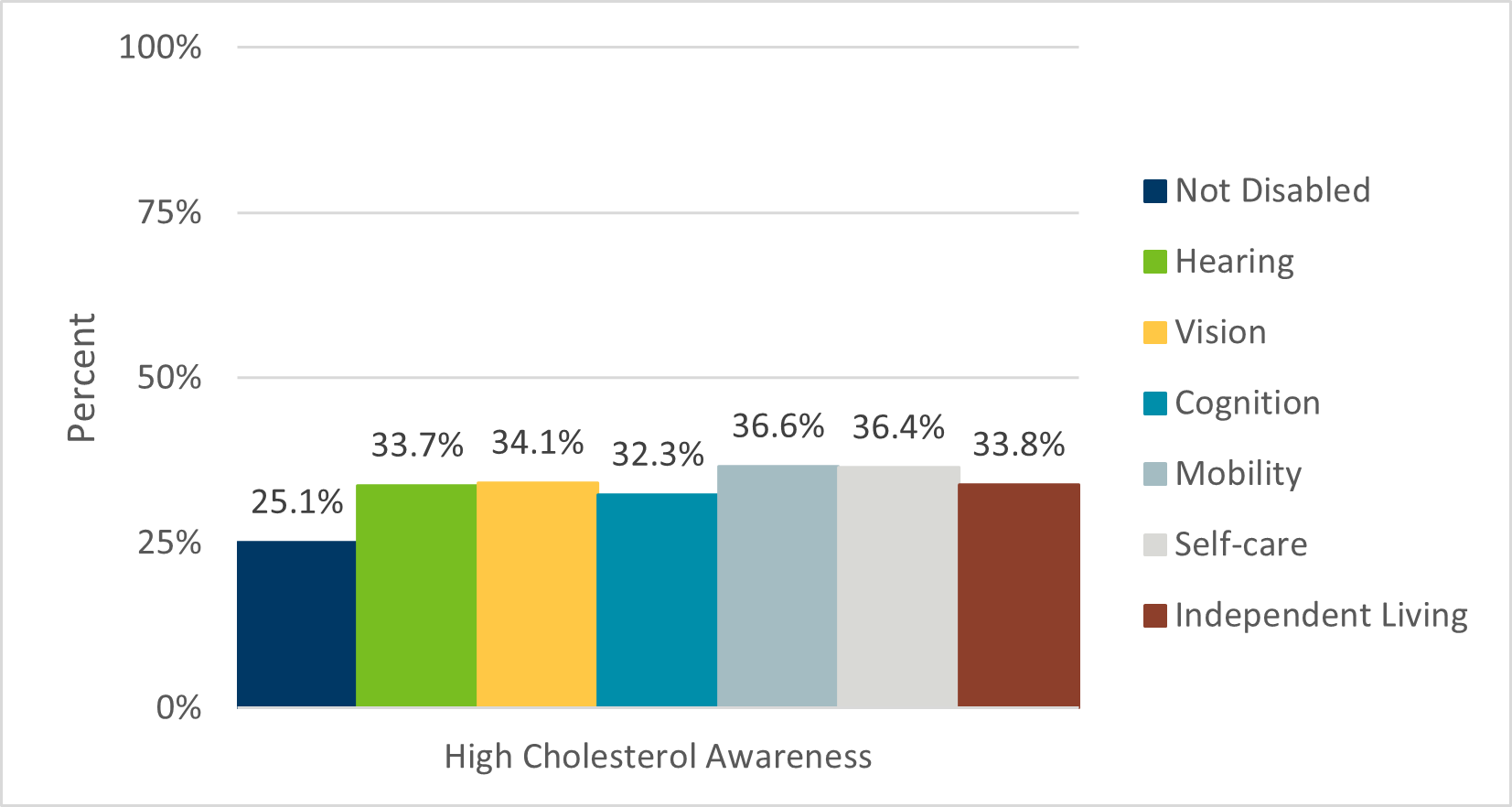Cardiovascular Health
- Cardiovascular Health Home
- CVH Data and Trends
- CVH Programs & Resources
- Minnesota 2035 Plan
- Minnesota Stroke Program
- About Us
Learn More
Related Topics
Contact Info
Cardiovascular Health Program
Cardiovascular Health Indicator
Measure: High Cholesterol Prevalence
| Indicator | Date of Most Recent Measure | Current Measure | Trend |
|---|---|---|---|
| Percentage of adults who have had their blood cholesterol checked and have been told it was high | 2021 | 26.7% | Stable |
Overview
- In 2021, 26.7% of Minnesota adults reported that they have been told they have high cholesterol, impacting approximately 1.1 million people.
- Almost half of Minnesota adults aged 65 or older reported being told they have high cholesterol.
- More than one in ten Minnesota adults reported that they have never had their cholesterol checked.
- Only 61% of adults in Minnesota reporting that they have been told they have high cholesterol also report they are currently taking cholesterol medications.
- Minnesota adults who have a disability were more likely to report having high cholesterol compared to adults without a disability.
- Approximately one third of adults who experienced 14 or more poor mental health days in the last 30 days also reported having high cholesterol.
Last Updated: 01/23/2023

